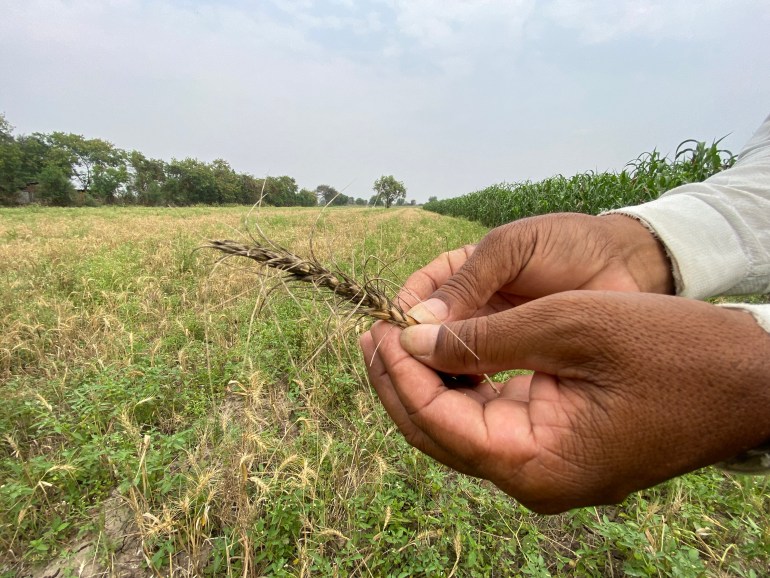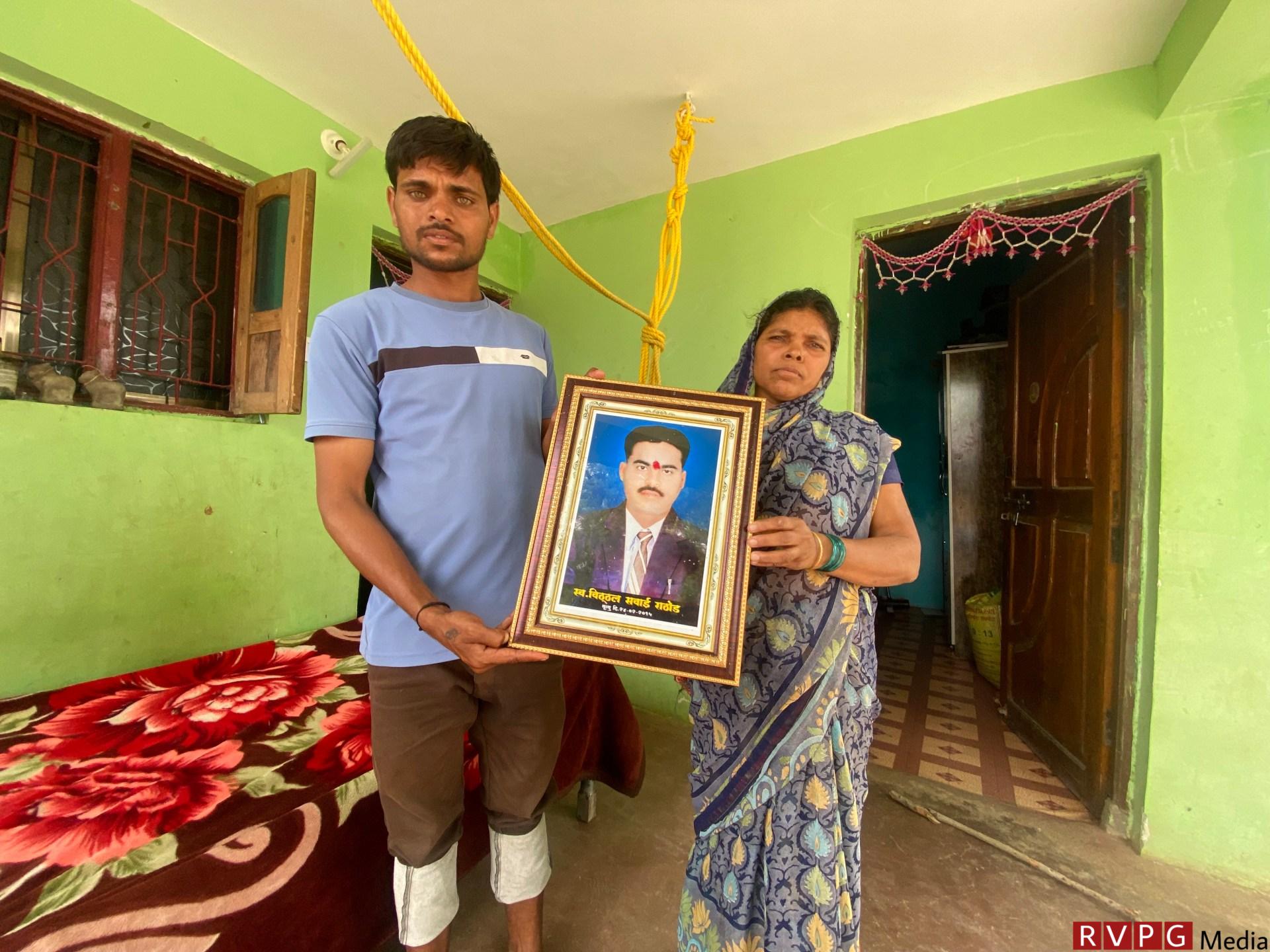Yavatmal, India – Like everyone around him, Vithal Rathod was excited about the future for him and his village when Narendra Modi became India’s Prime Minister on May 26, 2014.
Just two months earlier, on March 20 of the same year, Modi had chosen the 45-year-old farming village of Dabhadi from the more than 15,500 villages in the Vidarbha region of the western Indian state of Maharashtra to launch his campaign among the country’s farmers. The visit was important for Modi, who was eyeing the then prime minister’s chair, to reach out to the 65 percent of India’s population involved in agriculture.
During his visit to Dabhadi, Modi had drank tea with farmers like Rathod, visited village farms and promised an end to the death and despair that had long plagued the largely rural, impoverished part of Maharashtra state. Lack of adequate irrigation, unsettled weather and fluctuating world market prices for cotton – the main crop grown there – resulted in farmers suffering repeated losses and falling into debt. The resulting frustration led more than 9,000 farmers to take their own lives between 2001 and 2014.
Modi came and said what the farmers wanted to hear. “Your pain, your struggle and your hardships will force me to do something good,” he said to Rathod and the thousands who had gathered to listen to him. “I want to stick to this promise, I want to talk to experts and find solutions so that no poor farmer has to kill himself,” he said.
Rathod returned home to his family of five reassured and tried to put the recurring farm losses behind him. He owned a one-acre farm not far from where Modi spoke.
But over the next year, Rathod’s losses mounted and his optimism waned. In 2015, Rathod became a statistic: he hanged himself from the ceiling of his house, just off the main road leading to Dabhadi village, after another year of crop failure, wiping out his debt of 120,000 rupees (US$1,440). became insurmountable.
Rathod wasn’t the only one who felt disappointed. Ten years after Modi’s visit, his promise appears to have been shattered – even as India’s prime minister fights for re-election again, this time for a third term.
Data obtained by this correspondent shows that the number of farmer suicides in the region increased in the decade Modi was in power, compared to the previous decade when the Congress party, now in opposition, ruled the country.
Between January 2004 and December 2014, 9,671 farmers died by suicide. This number rose to 10,122 during the period from January 2015 to December 2023, according to information from the Amravati Divisional Commissionerate in Vidarbha, which oversees the administration of five of the country’s most suicide-hit districts: Amravati, Yavatmal, Buldhana, Akola and Washim . The actual number of farm suicides in the region under Modi is even higher – since the prime minister came to power in May 2014.
Between 2004 and 2014, this region recorded an average of 879 farmer suicide deaths each year. Since 2015, that number has risen to an average of 1,125 suicides per year – or three farmers taking their own lives every day.
The paradox of Maharashtra, the country’s richest state, where Modi’s Bharatiya Janata Party (BJP) has been in power locally for most of the last decade and also acted as the nerve center of the country’s agrarian crisis, has only worsened in the last decade .
Now, as India’s national elections progress, anger over failed promises is visible in farms across the region – parts of which are voting on Friday, April 26.
Nowhere more so than in Dabhadi itself.
Plans that lead nowhere
In the Rathod household, the family’s problems remain unchanged nine years after the suicide of their main breadwinner, despite the Modi government’s programs designed to benefit farming families like theirs.
Rameshwar, 25, Rathod’s son, had to stop his studies after his father’s death. Rameshwar instead did what his father did – make the most of his one-acre farm while falling deeper into debt.
Last year, he sowed cotton on his farm, but unexpected heavy rains washed away his crop. “I expected 40 hundredweight [4 tonnes] of cotton products, but in the end got only 5 quintals [500kg or 1,100 pounds]says Rameshwar, standing in front of the room where his father hanged himself.
He turned to the Modi government’s flagship program, the Pradhan Mantri Fasal Bima Yojana (PMFBY), a crop insurance scheme designed to compensate farmers for such losses. The system is intended to “offer comprehensive insurance protection against crop failures and thus contribute to the stabilization of farmers’ income,” according to the initiative’s website.
A back cover showed him that his loss was nearly 235,000 rupees ($2,815). He applied for the insurance amount but received only 10,000 rupees ($120), an amount determined based on local officials’ estimate of the damage his farm had suffered.
With a brave face, he hoped that the next crop he sowed, wheat, could help him make up for his losses. But in March this year, a hailstorm in the region destroyed almost half of its existing crop. He has again applied for compensation under the PMFBY. A month later, Rameshwar is still waiting.
Like his father, Rameshwar now has a lot of debt. His father was impressed with Modi, but he was not. Rameshwar will support the opposition parties in these polls.
Many others in his village experienced a similar emotional shift.

A change of heart
Narendra Dabhane, the former village head of Dabhadi, used to be “so fascinated by Modi that I would insult those who criticized him,” he says, sitting in the courtyard of his house in the village.
“I always told people that he was a man sent by God to help us,” says Dabhane with a sheepish smile. “I always thought that our village would become a paradise after the Prime Minister made such strong promises.”
But just a few months after Modi came to power, Dabhane began to feel betrayed.
Modi had proposed a seemingly revolutionary idea in his speech that he called the “5F formula from farm to fiber to fabric to fashion to abroad” – the idea that their cotton products could be converted into finished garments right here. in Vidarbha. The result would be the construction of factories in which the farmers’ children could be employed. The garments would then be exported all over the world. That was the dream that Dabhadi sold.
None of that happened. Dabhane doesn’t know that such supply chains are set up – both sons had to migrate to neighboring districts to find work.
Last year, Dabhane sowed cotton on his 1.2-hectare farm just outside the village. Much of his crop was damaged by the rain, and the rest fetched a price of 6,800 rupees per quintal ($81 per 100 kilograms) of cotton. His earnings are “less than what I got for my cotton ten years ago,” he said.
Government data shows that the government-mandated support price for medium-staple cotton increased by 74 percent, from Rs 3,800 (US$46) in 2015-16 to Rs 6,620 (US$79) in 2024-25.
But many farmers insist that traders rarely pay attention to these prices. And Dabhane points out what this data doesn’t reveal.
“All the inputs that go into the farm have become exorbitantly expensive,” he said. “A bag of fertilizer that cost us Rs 500 [$6] 10 years ago it is now almost 1,700 rupees [$20],” he said. “We’ll pay those too [Modi government-introduced] Goods and services tax on everything from pesticides to tractors,” he said.
Like Rathod, Dabhane too suffered heavy losses twice in the last few months as its cotton and wheat crops failed due to bad weather. But unlike Rathod, who got a measly Rs 10,000, Dabhane got nothing, he said.
All of this has meant that while Modi had said in February 2016 that he “dreamed” that farmers’ incomes would “double” by 2022, farmers like Dabhane have seen their real incomes fall.
From a Modi supporter, Dabhane has now developed into a harsh critic. In February this year, when Modi visited Yavatmal district, where Dabhadi falls, Dabhane and some others hung banners listing 16 promises that Modi had allegedly made to them in his speech in the village in 2014.
“We even made black chai that day,” he says with a laugh, in response to Modi’s famous Chai Pe Charcha (Chats over Chai) campaign. During his 2014 election campaign, Modi – who says he sold tea or chai at a train station as a young man – helped out with cups of tea at campaign events to underscore those humble beginnings. Local police, he said, arrested him for the protest and released him after Modi left.
The crisis has not only affected smaller farmers like Dabhane, but also many others who are ambitious and trying to make farming a more sustainable livelihood.
Prithviraj Pawar, 43, owns two hectares (five acres) and has rented another six hectares (15 acres) to grow crops such as soybeans and wheat. Last year, Pawar’s two-hectare soybean farm suffered heavy losses, his yield falling from the expected 25 quintals to just 12 quintals, his losses amounting to over 60,000 rupees ($720). “The insurance company gave me only Rs 11,000 [$132]which didn’t even come close to covering my expenses, let alone my losses.”
Pawar has a unique connection with Modi – he now runs the farm where Modi held his event in 2014 on a leasehold basis. However, this year the farm is mostly dry and the wheat crop has stunted due to the March hailstorm that also destroyed Rameshwar’s crop.
Such lived experiences, as well as the Modi government’s checkered record in dealing with farmers – from the introduction of three controversial new laws to regulate India’s agriculture in 2020 to repeated instances of police violence against protesting farmers – have left many in Vidarbha uncertain about the intentions of the government made suspicious.
Modi, on his part, has repeatedly tried to reach out to the farming community in the region. He has already held three public meetings in the region, including one in neighboring Wardha district on April 19, where he reportedly blamed the opposition Congress for the “long-standing challenges faced by farmers in the country”.
But many like Dabhane and Rathod and others in the region remain unconvinced and bitter. For them, new speeches will not wash away old betrayals.
